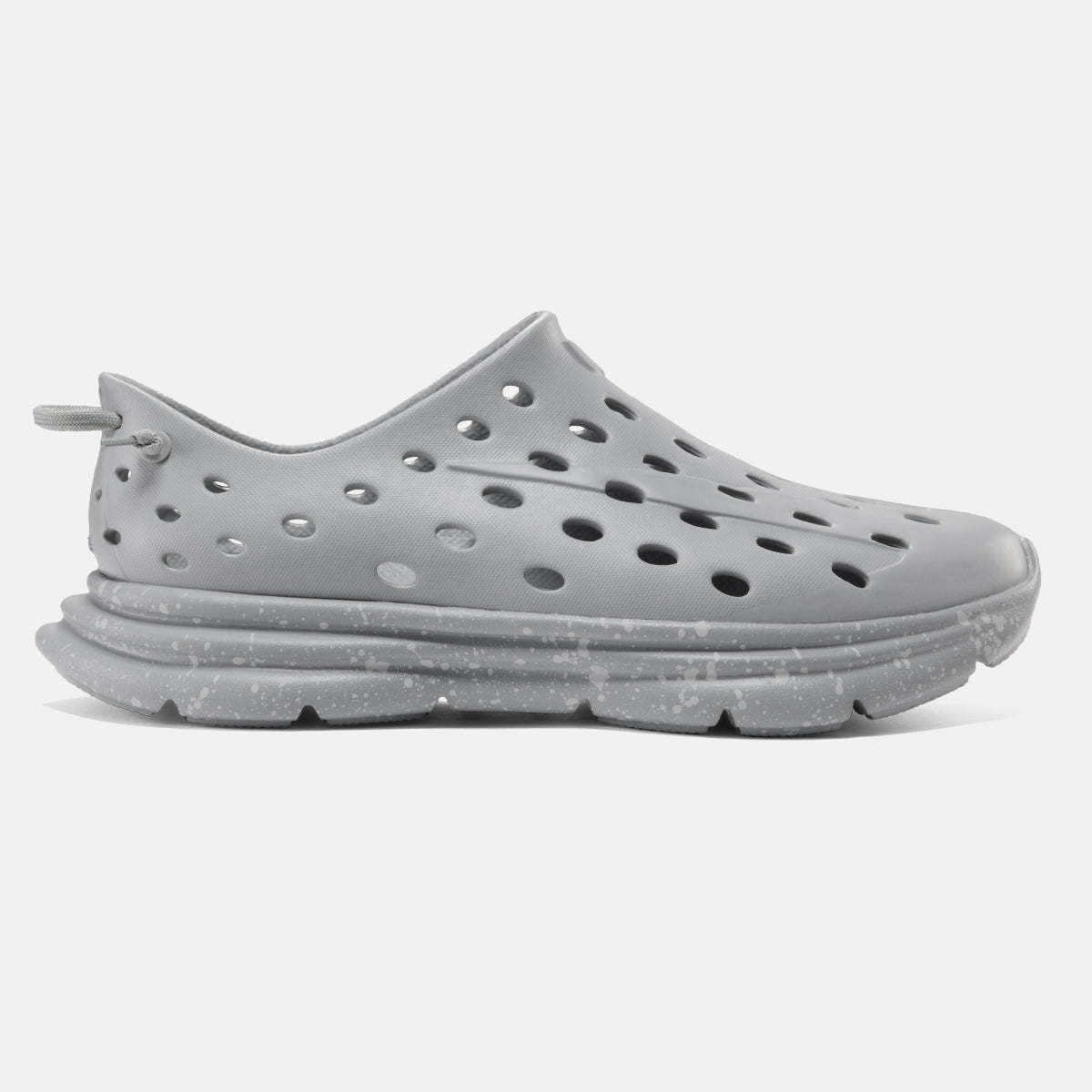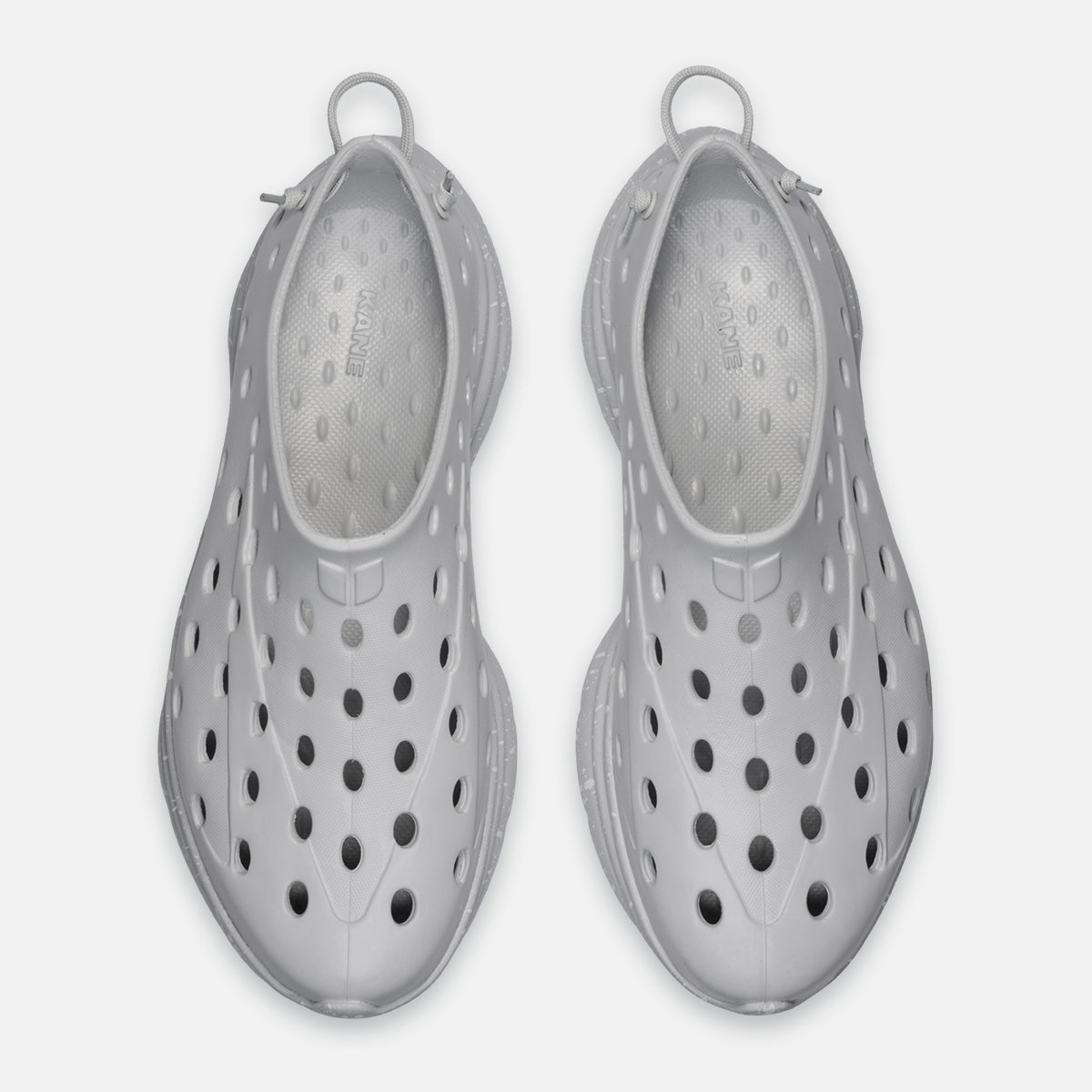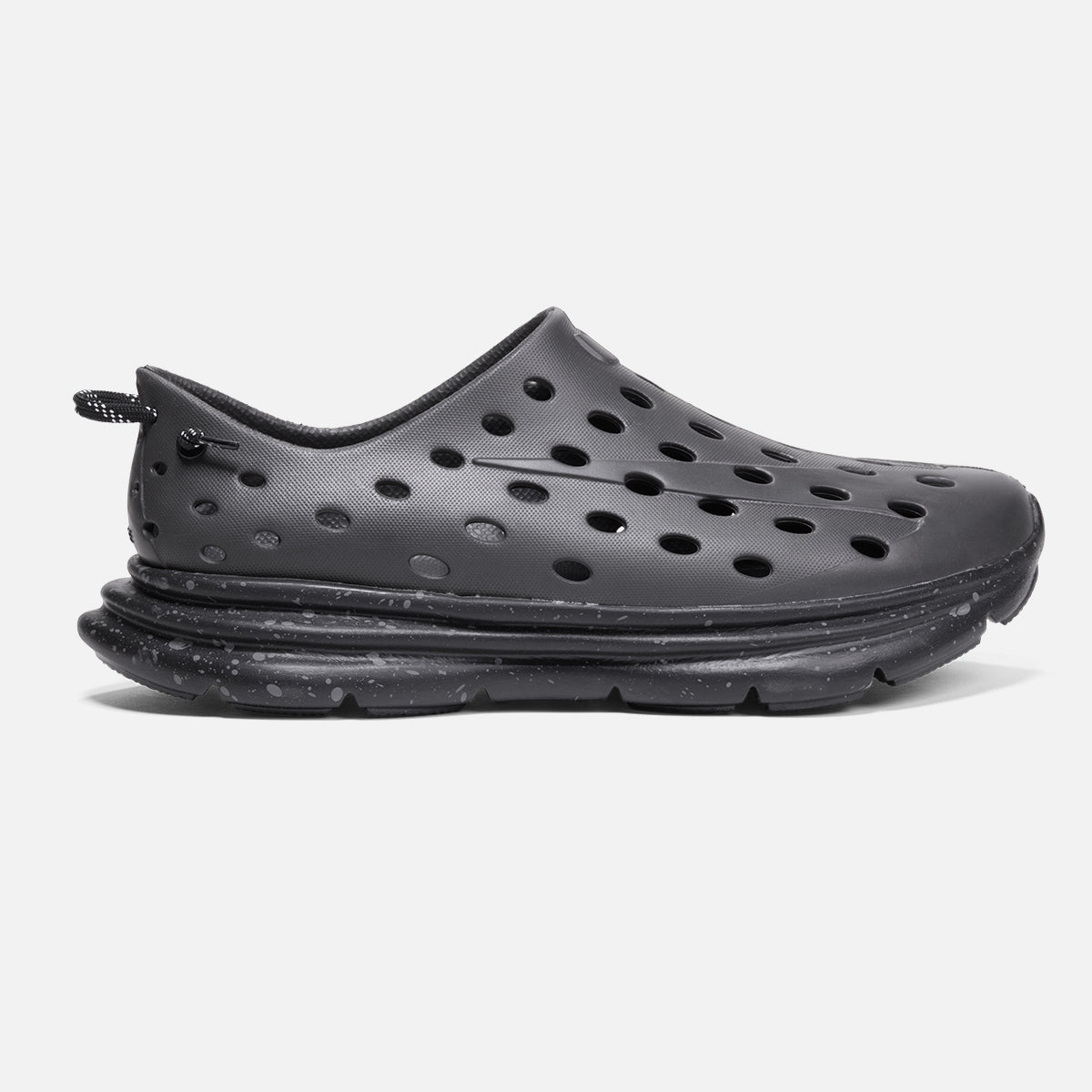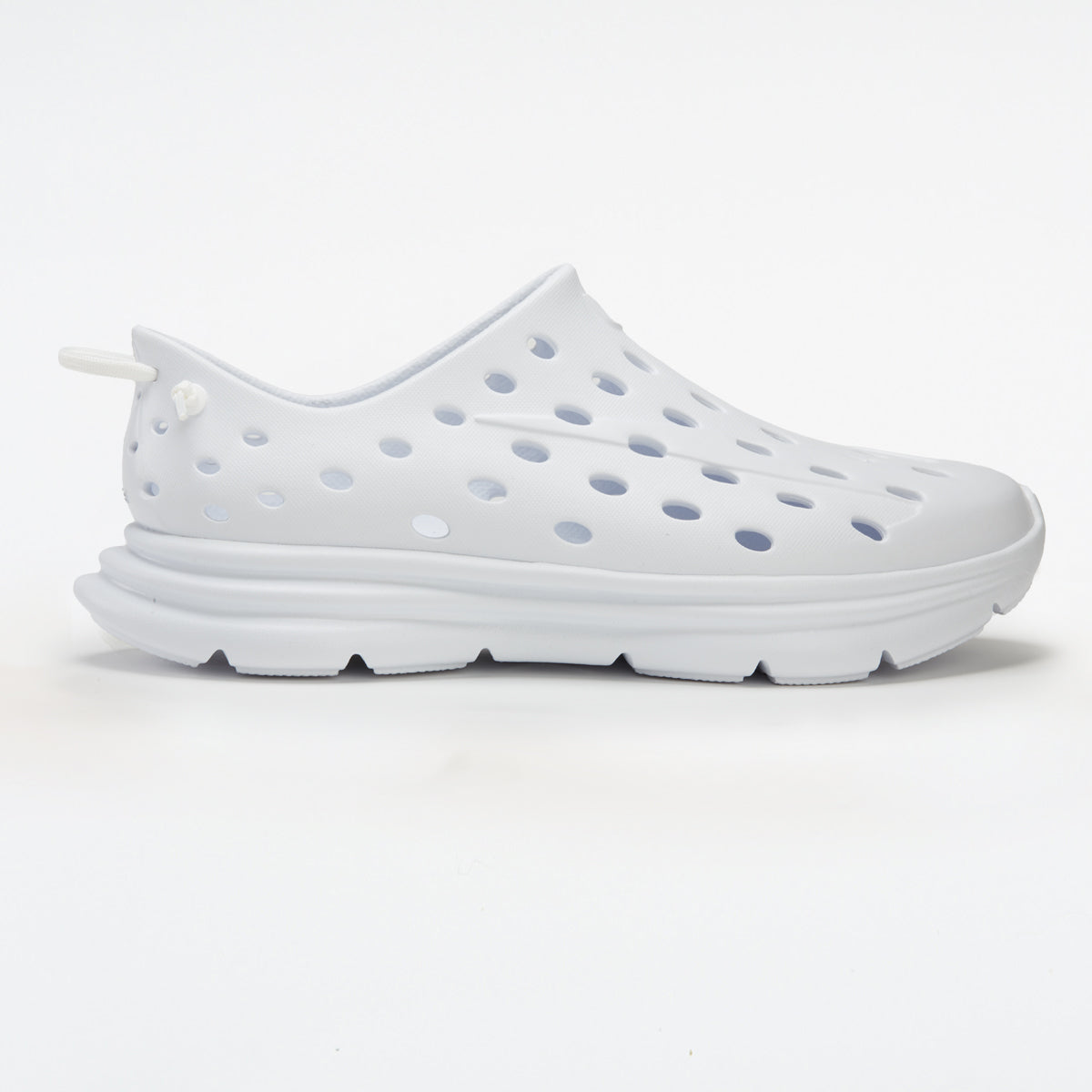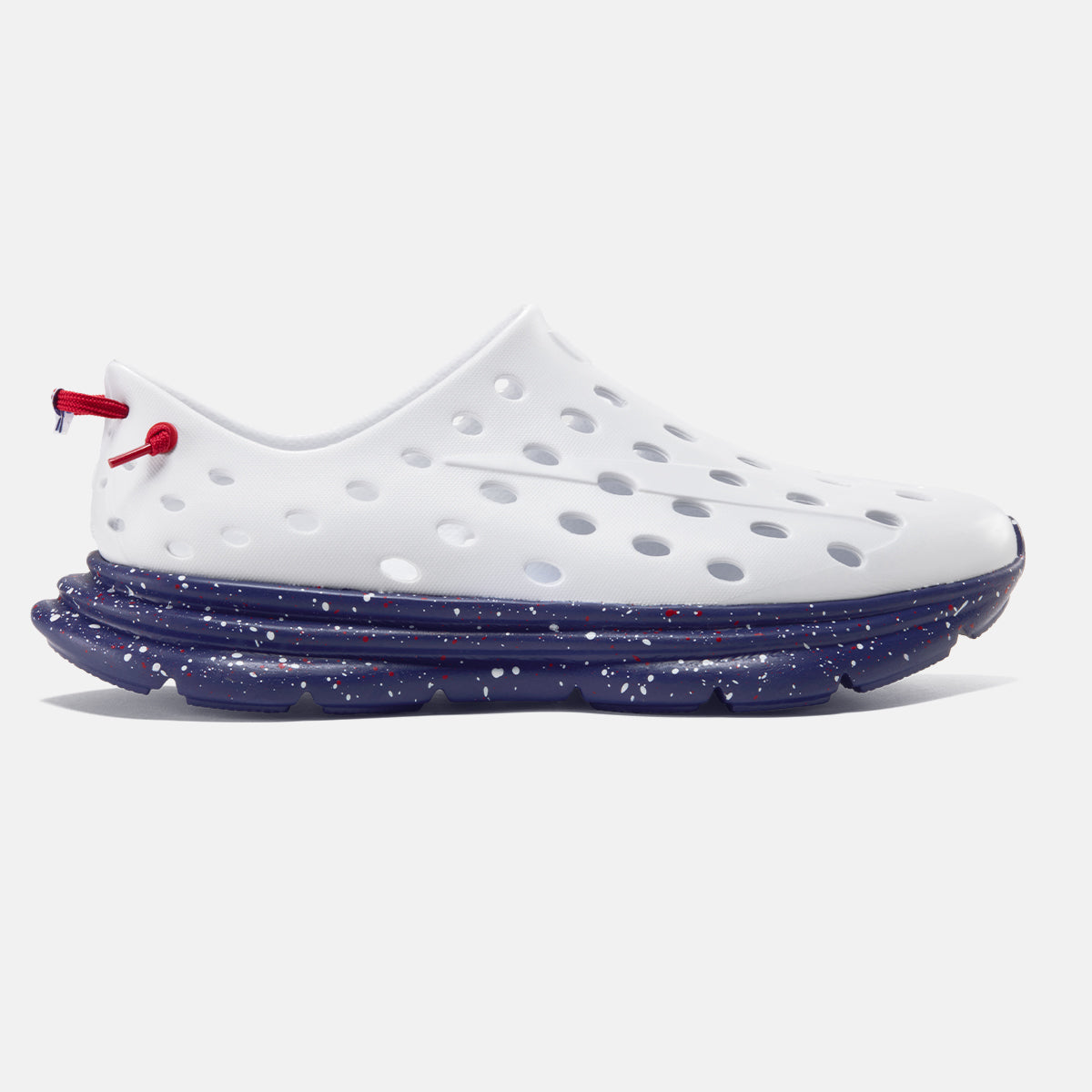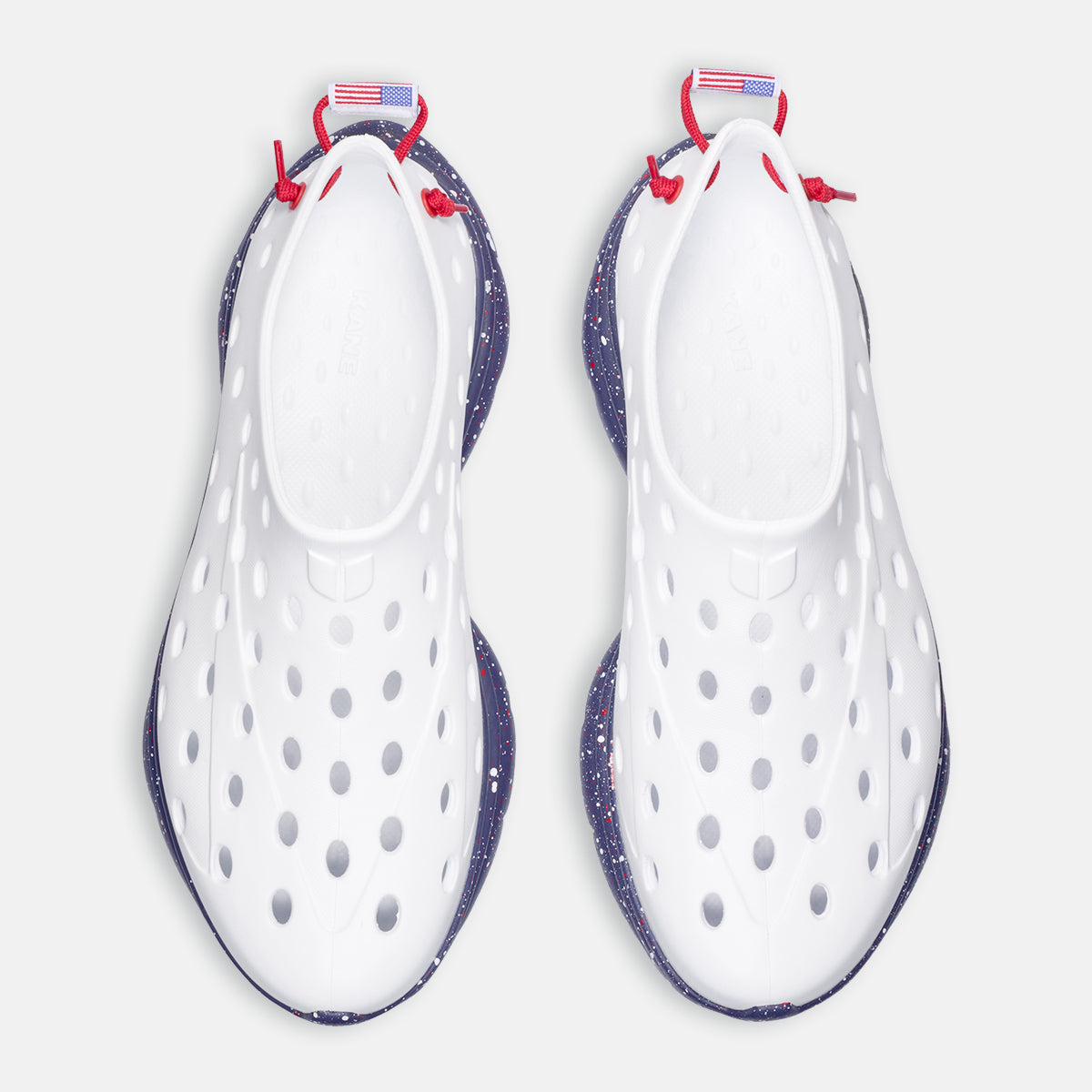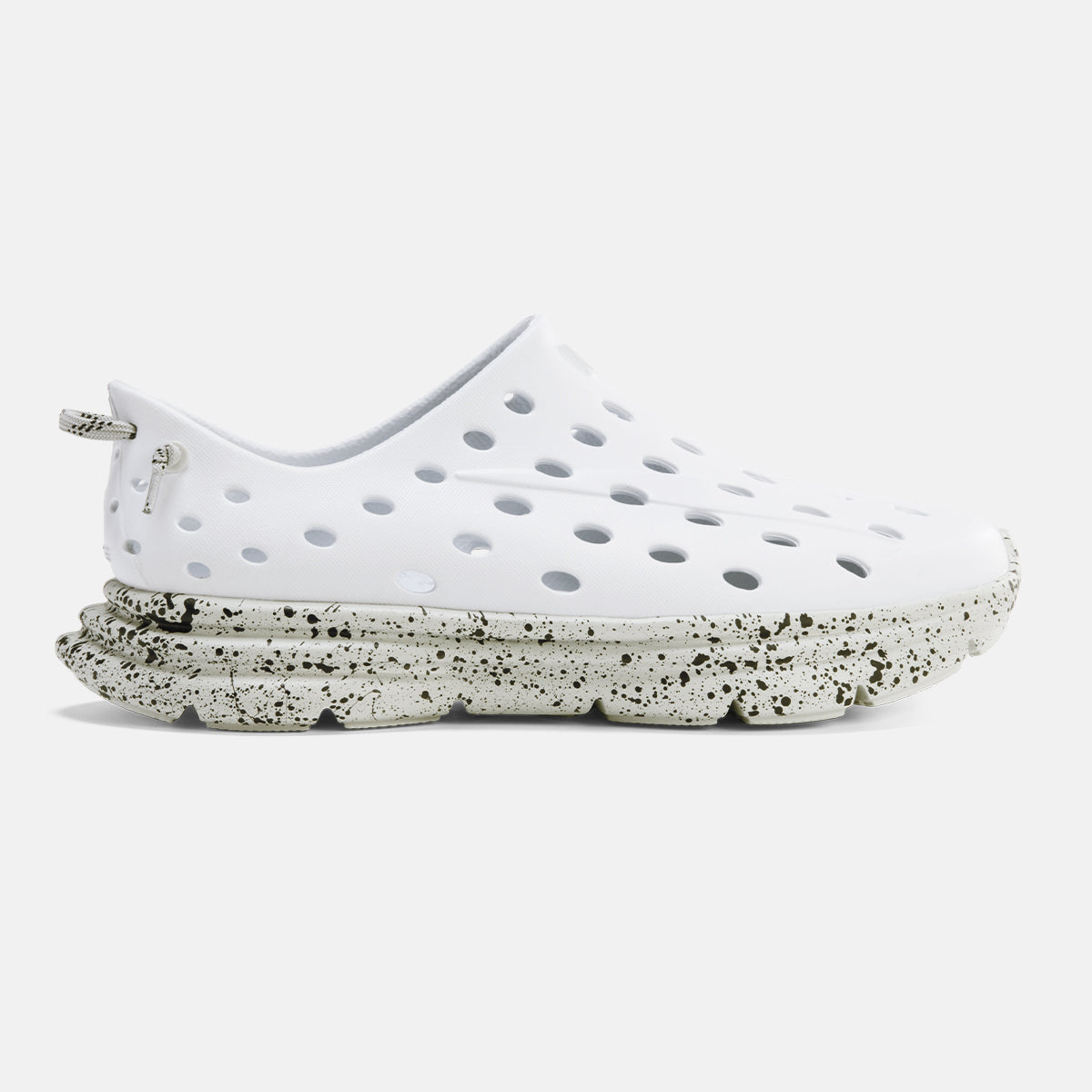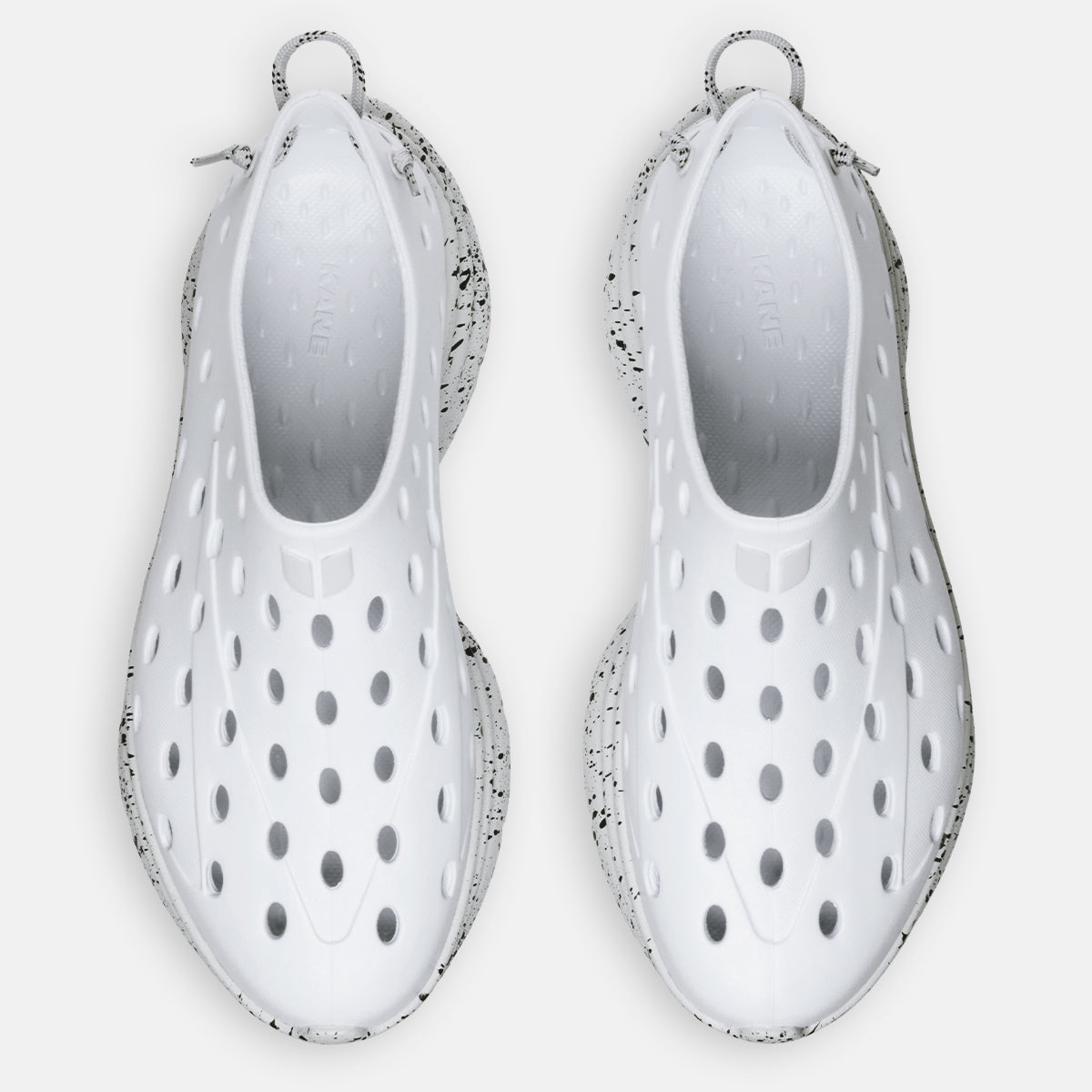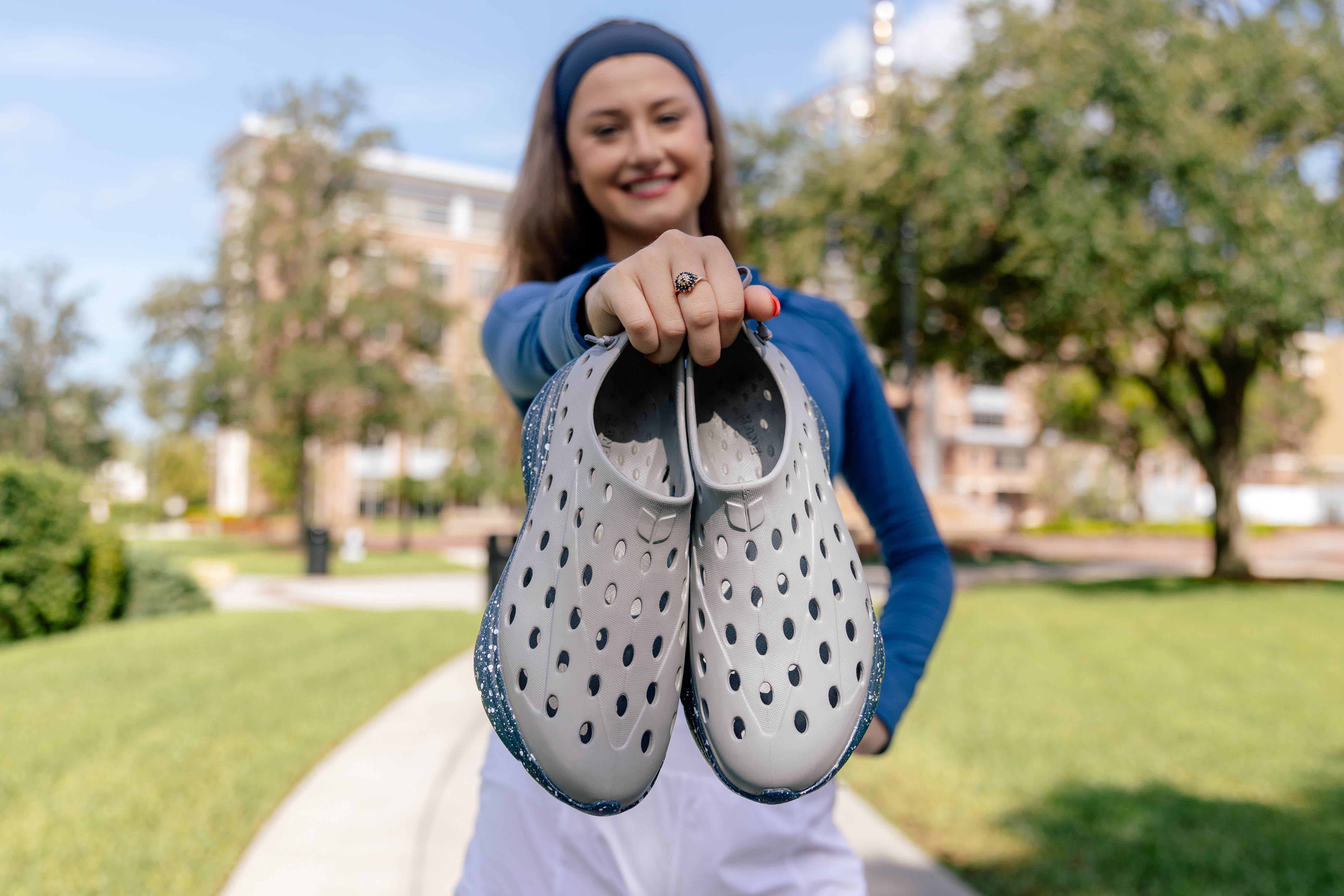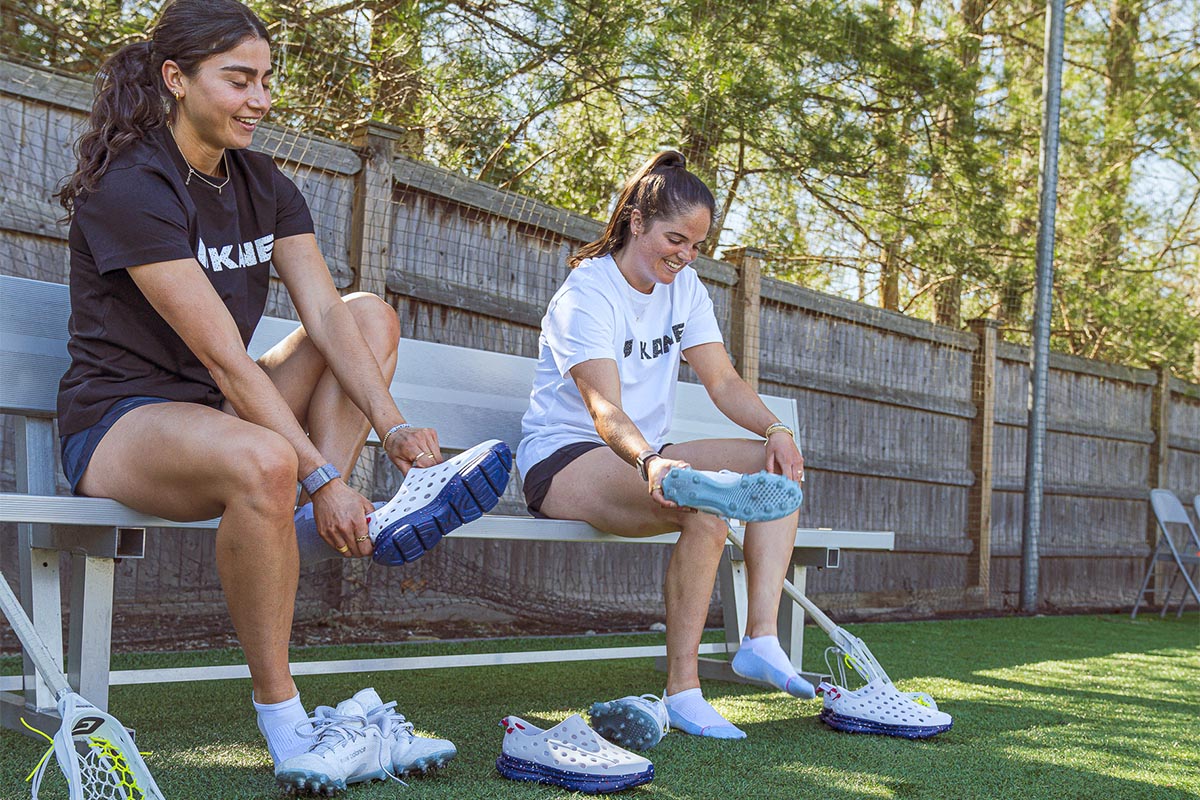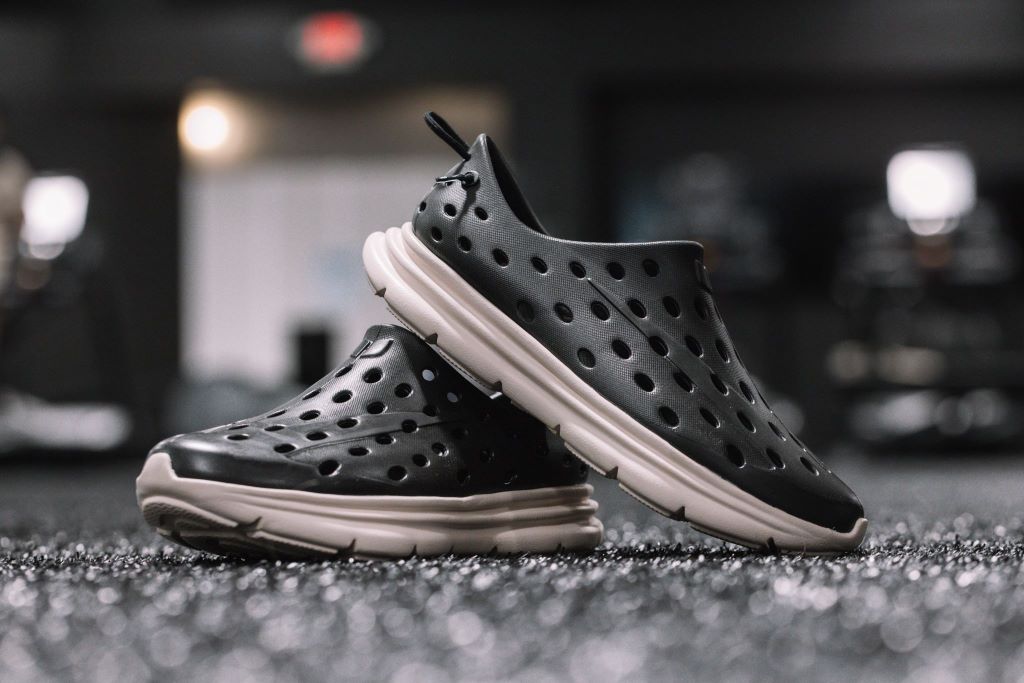Whether your feet ache from standing all day, wearing the wrong kind of shoe, or exercising, recovery will be top of your mind. And while staying off your feet for a while is a good idea, most of us realistically need to be out and about.
The impact of your footwear choice on recovery from aching and sore feet can be significant. Wearing the right shoes can help alleviate foot pain, provide support, and promote healing.
Wearing shoes when you’ve got foot pain: What to look for
Hopefully, it goes without saying that a narrow-toed pair of shoes, uncomfortable shoes, or your favorite high heels are the wrong shoes to wear right now. It might seem like a good idea to walk barefoot when you're home, but having a soft surface to cushion and support achy feet is usually better. So choose comfortable flat shoes while your foot muscles are in pain. Here are some other features to look for:
Arch support
Footwear with proper arch support will help distribute your weight evenly across the foot and reduce strain on the arch. Look for shoes with built-in arch support or consider using orthotic inserts for additional support.
Cushioning
Good cushioning can absorb shock and reduce the impact on your feet, especially when you're walking or running. Cushioning also just provides comfort and will help soothe your feet and give you that "walking on air" feeling.
Stability and motion control
Depending on the cause of your foot pain, you may benefit from shoes that offer stability and motion control. These features can help stabilize the feet, control excessive foot movements, and prevent overpronation or supination.
Proper fit
Shoes that fit well are essential for foot recovery. Ensure that your shoes have enough room in the toe box to allow for natural movement of the toes. Avoid shoes that are too tight or too loose, as they can contribute to foot discomfort and hinder the recovery process.
Breathability
Choose shoes made from breathable materials to allow air circulation around the feet. This can help prevent excessive sweating, reduce moisture buildup, and decrease the risk of developing fungal or bacterial infections.
What are recovery shoes?
Recovery shoes, also known as post-workout or post-activity shoes, are specifically designed to promote foot recovery and alleviate the stress and strain caused by physical activities.
Recovery shoes are typically worn after intense workouts, sports activities, or long periods of standing or walking. They can also be worn to help feet heal after an injury or simply when you have feet aches and pains.
A recovery shoe provides all the features listed above. They provide comfort, support, and aid in the recovery process. Additional characteristics of recovery shoes include:
Shock absorption
Recovery shoes incorporate materials or technologies that enhance shock absorption, minimizing the impact on joints and muscles during walking or other low-impact activities.
Lightweight and flexible
These shoes are typically lightweight and flexible to allow for natural foot movement and prevent additional strain or discomfort.
Breathability
Recovery shoes often feature breathable materials to allow air circulation and prevent excessive sweating and moisture buildup. This feature helps maintain foot hygiene and reduces the risk of developing fungal or bacterial infections.
Easy to slip on
Unlike traditional footwear, convenience is a key aspect of recovery shoes. They are often designed to be easy to slip on and off, providing hassle-free use during rest and recovery periods.
Roomy toe box
Recovery shoes usually offer a roomy toe box to accommodate natural toe movement and prevent crowding or discomfort.
Remember: While appropriate footwear can aid in foot recovery, it's also essential to address the underlying cause of foot pain and consider other therapeutic measures such as rest, icing, stretching, and seeking medical advice if the pain persists or worsens.
Who should wear recovery shoes? Beyond aches and pains…
Active recovery shoes can help with all kinds of foot aches and pains. They’re ideal for people who engage in physical activities or occupations that place significant stress on their feet. Here are some groups of people who can benefit from using recovery shoes:
Athletes who engage in strenuous activities
Recovery shoes are ideal for athletes who engage in strenuous training regimens. By providing the necessary support and comfort, these shoes aim to aid in the recovery process, reduce post-exercise soreness, and enhance overall foot health.
Standing or walking for long periods
If you have a job that requires you to stand or walk for extended periods, such as retail, hospitality, or healthcare, recovery shoes can provide cushioning and support to reduce foot fatigue and discomfort.
Work shoes
Many people opt for recovery shoes as their everyday work shoes, especially if their job involves being on their feet for most of the day. The added comfort and support can help alleviate strain and improve overall foot comfort.
Traveling or flights
Recovery shoes can be a great choice for long flights or extended travel periods. They provide cushioning and support, which can help minimize foot and leg swelling and improve overall comfort during travel.
Injury recovery
Whether you're recovering from a foot or leg injury or undergoing rehabilitation, recovery shoes can provide the necessary support and comfort to aid the healing process. They can help reduce pressure on sensitive areas, promote proper alignment, and provide a cushioned environment for the injured foot or leg.
Plantar fasciitis or foot conditions
People dealing with conditions like plantar fasciitis, flat feet, or other foot problems like corns or calluses may find relief by wearing recovery shoes. The cushioning, arch support, and proper alignment provided by these shoes can help reduce pain and discomfort.
General comfort and wellness
Even if you don't engage in intense physical activities, recovery shoes can still offer benefits in terms of overall foot comfort and wellness. They provide a comfortable and supportive environment for your feet throughout the day, promoting good posture, reducing strain, and enhancing general well-being.
Discover Kane Recovery Shoes
Kane’s recovery shoes provide excellent support, comfort, and durability for those in need of top-notch recuperative footwear. Featuring an adjustable hook-and-loop single strap synthetic upper, plush TPR footbed as well as a durable injected eco-friendly EVA outsole, these kicks come with all the right features to assist you during your rehabilitation journey.
Aside from providing quality products, they are also committed to sustainability having made plans to become a B Corp while dedicating 1% of their overall profits towards environmental charities.
Proper use and care of Kane Revive recovery shoes
For optimum recovery, your Kane’s recovery shoes should be used and cared for with precision. Immediately after physical activity is done, slip on the shoes for 15-30 minutes. Make sure they are laced up tightly to provide maximum support and comfort. To ensure their peak performance over time, clean regularly with a damp cloth and delicate detergent. Remember also to store in a dry place sheltered from direct sunlight.
When and how to wear Kane Revive
The best moment to wear most recovery shoes is directly after a strenuous physical activity such as running or exercising. This helps minimize inflammation and launch the healing process.
To guarantee maximum comfort and effective recuperation, make sure that you are wearing your recovery footwear correctly by tying up laces securely for a snug fit around your feet.
Cleaning and maintenance of your Kane Revives
Maintaining your recovery shoes is imperative for their effectiveness and extended life. Gently clean them with a damp cloth and gentle cleanser, avoiding any harsh substances that could damage the fabric. Make sure to air-dry your shoes in an open area afterward. This will prevent moisture buildup, which can lead to bacteria growth.
In general, replace your recovery shoes every 6-12 months based on how much they are worn or used during that time.







































